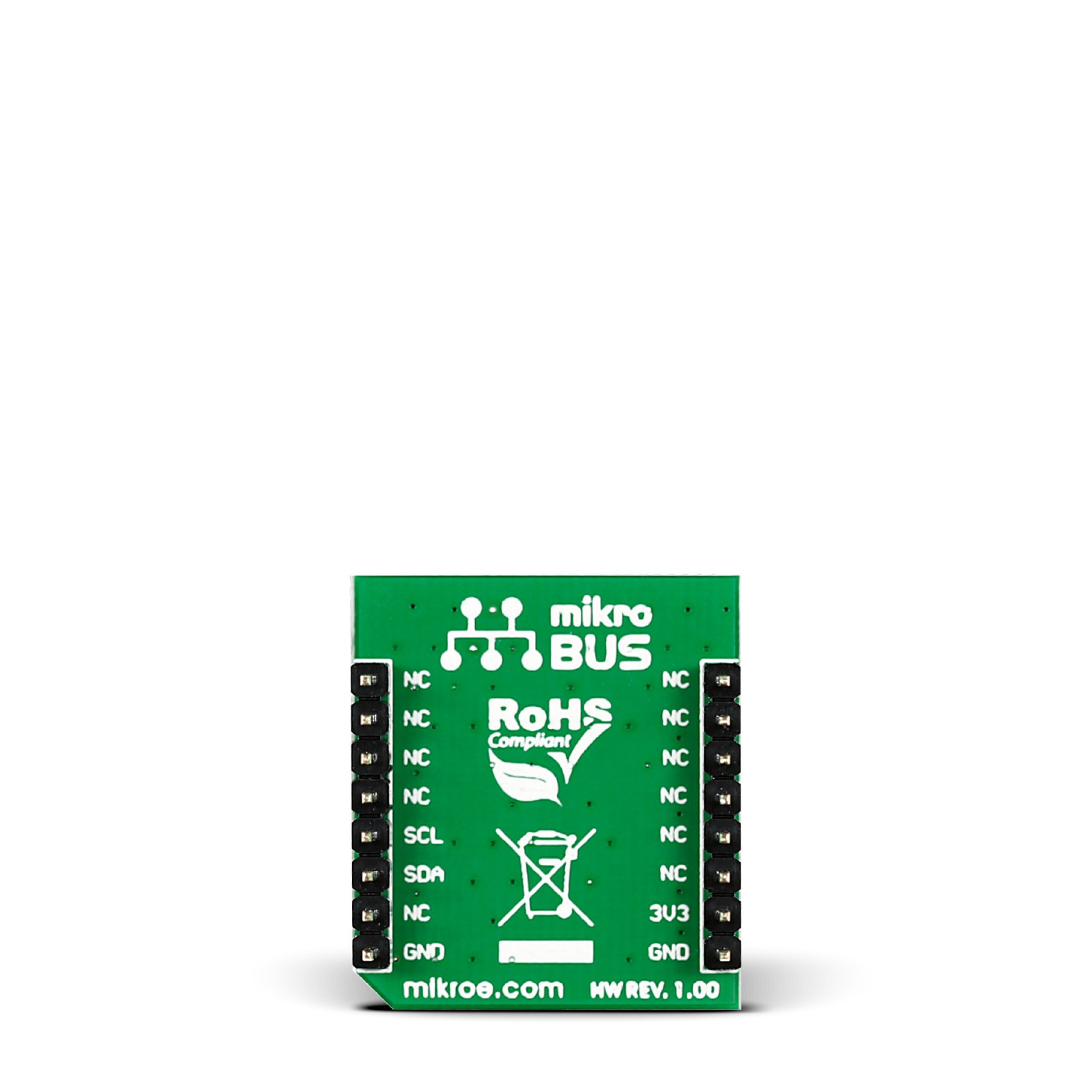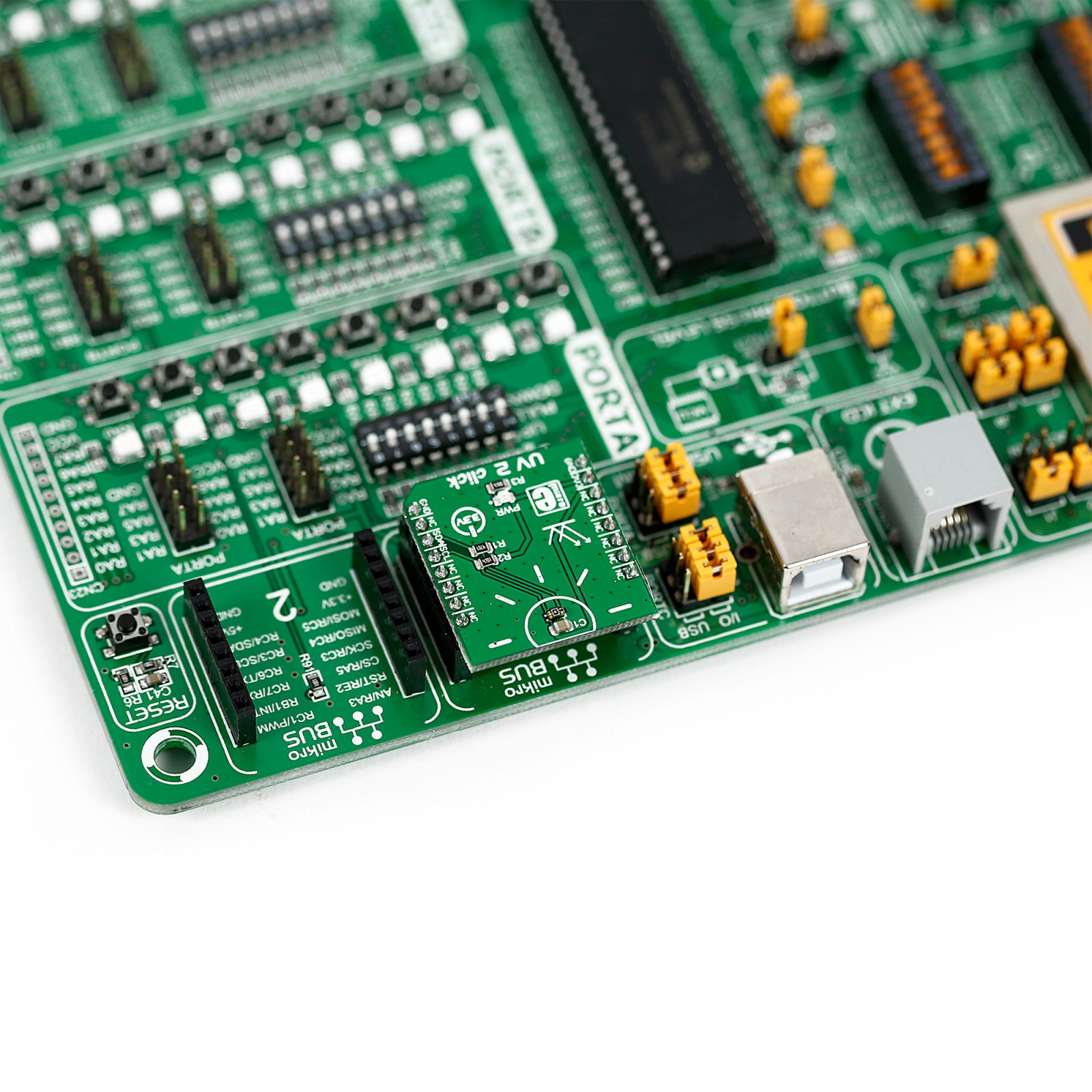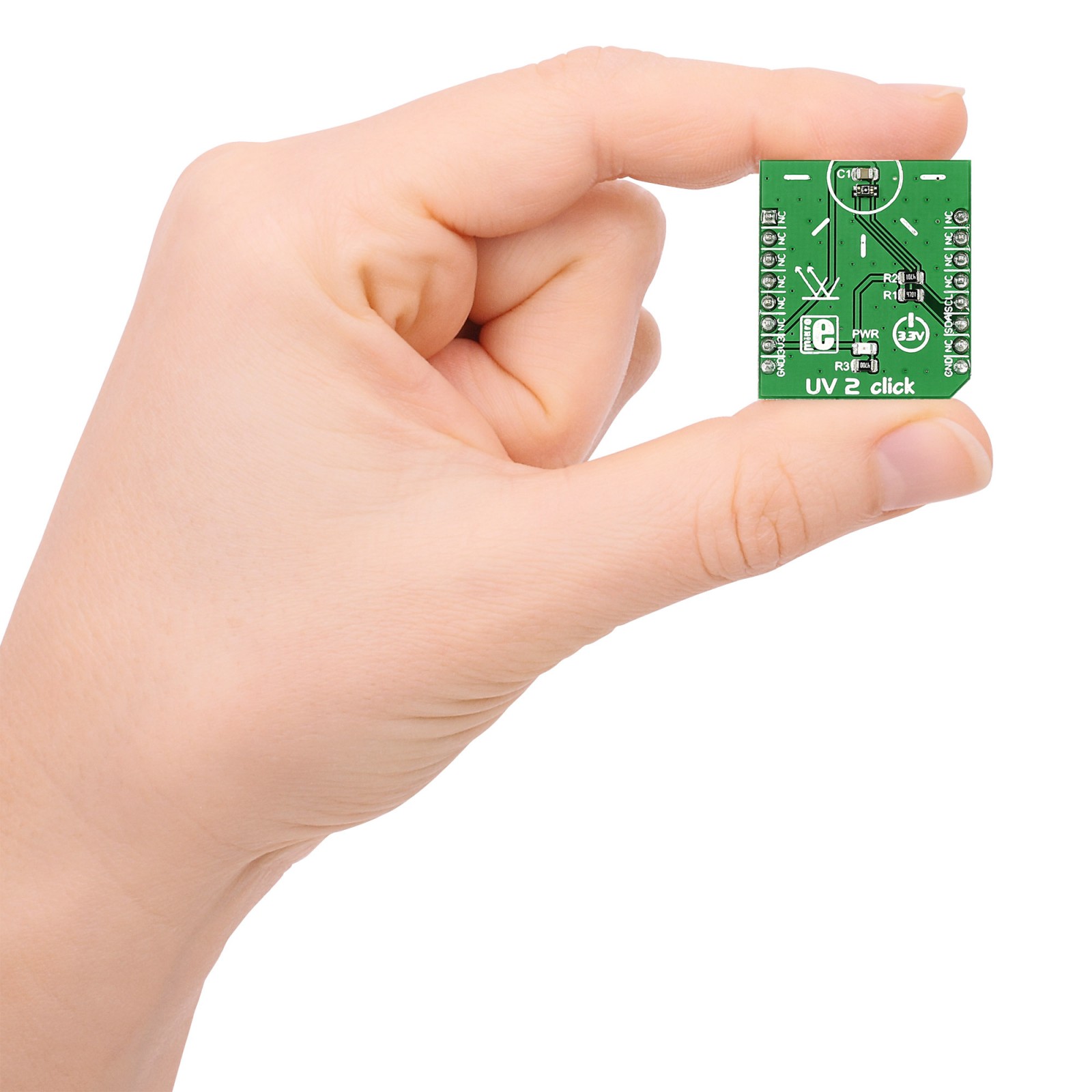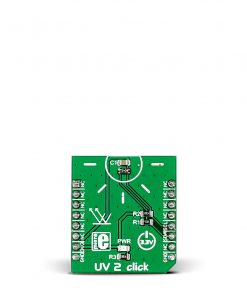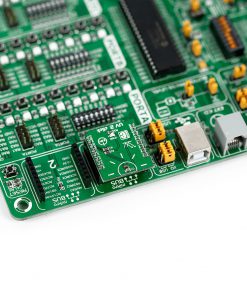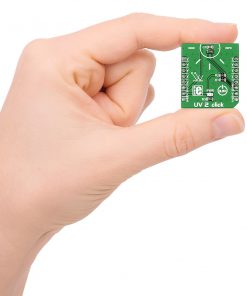UV 2 Click
R435.00 ex. VAT
UV 2 Click is a compact add-on board that measures ultraviolet light. This board features the VEML6075, a UVA and UVB light sensor with an I2C interface from Vishay. It incorporates a photodiode, amplifiers, and analog/digital circuits into a single device using CMOS technology and converts solar UV light intensity to digital data in 16-bit resolution. The sensor has a specified peak UVA sensitivity of 365nm and a peak UVB sensitivity of 330nm. It also has temperature compensation capabilities to keep a stable output regardless of the temperature conditions. This Click board™ makes the perfect solution for the development of applications based on systems that warn of excessive UV exposure or industrial applications where UV is used for sterilization.
UV 2 Click is supported by a mikroSDK compliant library, which includes functions that simplify software development. This Click board™ comes as a fully tested product, ready to be used on a system equipped with the mikroBUS™ socket.
Stock: Lead-time applicable.
| 5+ | R413.25 |
| 10+ | R391.50 |
| 15+ | R369.75 |
| 20+ | R355.83 |


